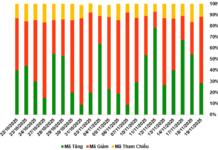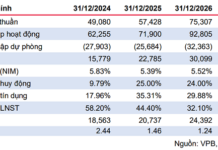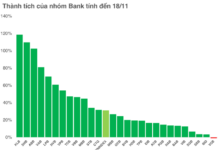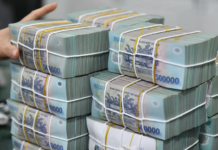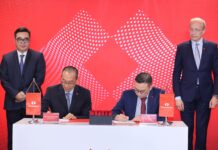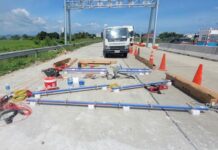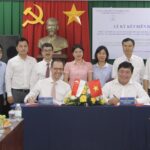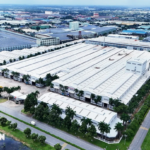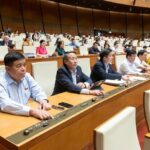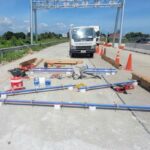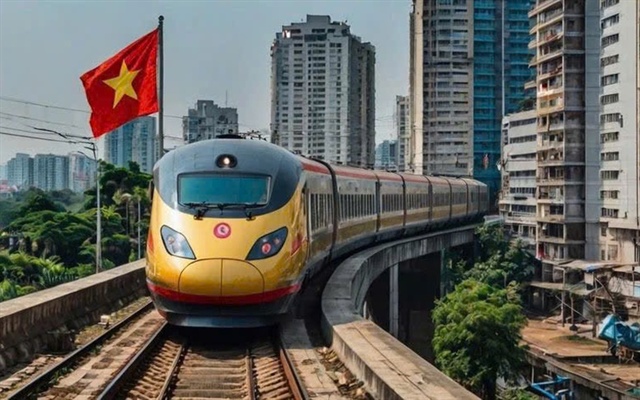
National Assembly Passes Resolution on the North-South High-Speed Railway Project |
Prior to the vote, the National Assembly heard a report from Lê Hồng Thanh, Chairman of the National Assembly’s Economic Committee, on the absorption, refinement, and explanation of the investment policy for the North-South High-Speed Railway Project.
Mr. Lê Hồng Thanh stated that the majority agreed with the necessity of investing in the North-South High-Speed Railway Project. The project plays a crucial role in realizing the Party’s guidelines and the State’s policies, creating a breakthrough in socio-economic development, and modernizing transportation infrastructure.
Some suggestions were made to carefully consider all factors and risks to develop feasible solutions suitable for Vietnam’s conditions.
The NA Standing Committee agreed with the majority of deputies on the necessity of the project. In reality, the project has been studied and prepared for a long time (about 18 years), and experiences from countries with high-speed railways have been referenced to improve the pre-feasibility study report. This report included analyses and calculations that predicted transportation needs and considered Vietnam’s current potential and position as favorable conditions for implementing the project.
At the same time, the competent authority thoroughly discussed the investment policy and the factors and conditions for implementing the project. However, the calculations at the pre-feasibility study stage are still preliminary. Therefore, it is requested that during the project’s feasibility study stage, the Government directs relevant agencies to continue making specific calculations and carefully evaluating factors and risks to develop appropriate solutions to ensure the project’s feasibility.
Regarding the scope, scale of investment, and preliminary design, some suggestions were made to extend the project’s scope from Lang Son to Ca Mau and implement it in phases. It was also proposed to connect the project to the Ho Chi Minh City-Can Tho railway line to ensure synchronization.
According to the NA Standing Committee, the Railway Network Planning for the period of 2021-2030, with a vision to 2050, has identified the development of new railway routes from Lang Son to Can Tho, including three sections: Lang Son (Dong Dang)-Hanoi, Hanoi-Ho Chi Minh City, and Ho Chi Minh City-Can Tho. These sections aim to connect dynamic regions, cities, and major economic centers while ensuring national defense and security along the North-South economic corridor.
As the railway sections from Lang Son to Can Tho have different transport needs, technical standards, and types of railways, they are studied and invested in as independent projects, considering the transport demand of each section and the ability to mobilize resources. The Lang Son-Hanoi section, with a length of 156 km, is a standard railway currently in the process of detailed planning, expected to be invested in before 2030. The Hanoi-Ho Chi Minh City section, with a length of 1,541 km, is a high-speed railway, with construction expected to begin in 2027. The Ho Chi Minh City-Can Tho section, with a length of 174 km, is a standard railway currently in the preparation stage, expected to be implemented before 2030.
Regarding the project’s socio-economic and financial efficiency, some opinions suggested a thorough evaluation of financial efficiency, especially capital recovery and repayment, and the need for subsidies during operation and exploitation.
According to the NA Standing Committee, the Government has calculated significant direct and indirect economic benefits, but they cannot be included in the project’s revenue and financial efficiency. Similar to models in other countries, high-speed railway projects bring enormous benefits to the economy, but revenue calculations for project recoupment mainly come from transportation and commercial exploitation to balance the costs of operating, maintaining vehicles, infrastructure maintenance, and infrastructure fees to the State.
During the first four years of operation, revenue will only cover operating and vehicle maintenance costs. Therefore, the State needs to provide support from the economic affairs capital allocated to the railway system, as is currently done, for infrastructure maintenance.
Regarding the project’s capital source, many opinions suggested a more comprehensive evaluation of the capital source and the ability to balance, allocate capital for each stage of the project to ensure feasibility and effectiveness. It was also proposed to thoroughly assess the project’s impact on the state budget deficit, public debt, and the ability to repay debts in the medium and long term.
Some argued that since the project spans three medium-term periods, the approved investment level for each period should only be considered within that period, and the capital implemented in each period should be calculated into that medium-term period without transferring it from the previous medium-term period to the next.
According to the NA Standing Committee, the project spans three medium-term periods, and the capital balance and allocation to implement the project are as follows: for the 2021-2025 period, the capital demand for the project is about VND 538 billion (used for investment preparation) and has been balanced in the medium-term public investment plan of the Ministry of Transport. For the 2026-2030 period, the capital demand is about VND 841,707 billion, and for the 2031-2035 period, the capital demand is about VND 871,302 billion.
According to the Law on Public Investment 2019, the assessment of capital balance capability can only be made according to the medium-term public investment plan for five years, and the transition to the next phase should not exceed 20% of the public investment plan of the previous phase. Since the project spans three medium-term periods, there are no regulations on determining the capital balance capability.
Therefore, the draft resolution stipulates that the project will be allocated capital through the medium-term public investment plans, and the capital allocation for each period will be suitable for the project’s progress without having to undergo the capital balance capability assessment as prescribed in the Law on Public Investment.
Allowing the Application of Special Mechanisms and Policies
Regarding special mechanisms and policies, especially for implementing the project, many opinions emphasized the project’s crucial role, long-term strategic significance, and profound and broad impact on all aspects of Vietnam’s socio-economic life. Given its large scale, complex technical requirements, and first-time implementation in Vietnam, applying special mechanisms and policies is essential to ensure the project’s feasibility and effectiveness.
The NA Standing Committee agreed with the opinions of the deputies and directed relevant agencies to review and finalize the special mechanisms and policies to ensure feasibility and effectiveness in implementing the project.
Concurrently, the Government was assigned to issue a decree guiding the implementation of these mechanisms and policies in detail. During the process, if there is a need to supplement or adjust special mechanisms and policies, the Government will submit them to the National Assembly and the NA Standing Committee for consideration and decision.
Regarding Policy 7, it was suggested to stipulate a separate policy on technology transfer and operation and exploitation of the project after completion.
The NA Standing Committee clarified that human resource training is a comprehensive and synchronized program implemented over a long period, from the research stage to the future operation and exploitation stages. The total training demand is estimated at 227,670 people.
At the same time, Policy 8 on industrial development and technology transfer is suitable for the conditions and level of Vietnam’s railway industry.
Stipulating a separate policy on technology transfer and operation and exploitation of the project after completion would disrupt the linkage of a comprehensive program. Therefore, the content remains unchanged in the draft resolution.
In addition, Mr. Lê Hồng Thanh stated that specific opinions had been explained and received in the full report. At the same time, the NA Standing Committee directed the reception of opinions, reviewed and finalized the resolution, and edited the text for consistency.
“Singapore-Thai Energy Venture Seeks Investment Opportunities in 102 MW Khanh Hoa Wind Farm Project”
On November 26, 2024, the Khanh Hoa Department of Planning and Investment signed a Memorandum of Understanding (MoU) with Singapore-based Nexif Ratch Energy (Nexif Ratch Energy SE Asia Pte. Ltd.), outlining a collaborative effort to explore investment opportunities for the Nexif Energy Khanh Hoa 1 Wind Farm project.
The Electric Revolution: Vietnam’s Race to Power Up for the EV Boom
Electric vehicles are getting cleaner, thanks to the adoption of green energy sources. However, with a target of 78 million electric vehicles on the road, Vietnam faces a challenge in ensuring a stable power supply to achieve net-zero emissions.
Preparing Sufficient Land Reserves for Logistics and E-Commerce
Savills Vietnam has observed a boom in e-commerce and logistics, which has led to a surge in demand for warehouses and industrial properties. This sector is poised for significant growth in the coming years, and the company foresees vast potential for development in the real estate market to cater to these industries.
The New Threshold for Procurement Contracts: Raising the Bar to 300 Million
On November 29, with an overwhelming majority of 444 out of 446 National Assembly delegates voting in favor (accounting for 92.69% of the total number of National Assembly deputies), the National Assembly passed the Law amending and supplementing a number of articles of the Law on Planning, Investment Law, Law on Investment in the form of Public-Private Partnership, and the Bidding Law.




